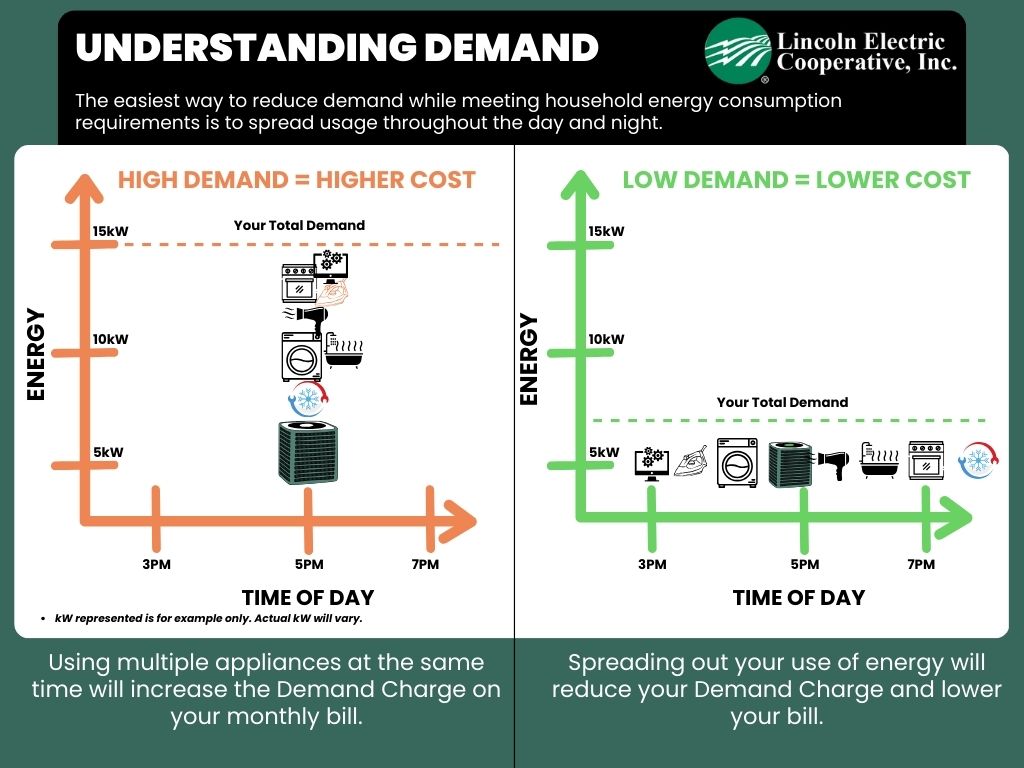Understanding Demand
Demand is determined by the household habits & energy consumption rate; our system records the energy demand every 15 minutes & then reports/logs the highest demand for that day, in turn, the monthly billing statement reflects the highest demand logged during that billing span. Depending on the habits within the home, the demand can be higher one day compared to another. For example, if there is a load of laundry going, the dishwasher running, & the vacuuming being used all in a single afternoon- the energy is being “demanded” to the location in a higher surge than perhaps a normal afternoon with just the TV on or a computer running, or simply just basic household appliances being plugged in. A way to reduce high-demand charges would be spreading high-energy tasks throughout the week, or even performing certain tasks throughout the day rather than all at once. One of the most recognizable culprits to a rise in demand is during the heating season, which is defined from the beginning of October through the end of April since this tends to be a time when electric heat is utilized after being idle all summer & the demand heightens a bit.
